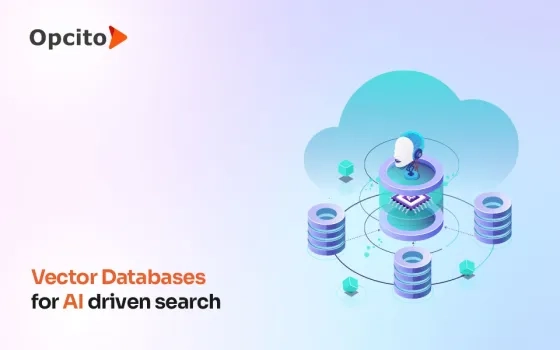Understanding the management process for a product throughout its lifecycle takes time and effort. Companies use data management tools to help them overcome the data challenges of complex product development. Among these challenges is ensuring that different teams have the resources they need. But why should companies improve their data management? Because today’s complex product development environment faces many challenges.
Data management issues create disruptions in businesses that can use new, more effective methods to solve these challenges. With data management maturity, companies are now focusing on collaborating with others outside their organization. There are new challenges to face, such as making sure data is available internally and externally, whereas ten years ago, the focus was making data available internally. Let’s start by looking at some key terminologies that are often misinterpreted.
Difference: Product Management vs. Product Data Management
Product management includes every aspect of the product life cycle; development, marketing, pricing, and more. However, Product data management is a broad stretegic term that implies companies manage product information across marketing and selling channels.
For example, Product Data Management also describes how companies export product information to P2C platforms before those channels are enriched for the customer.
Many engineers and developers use PDM to keep track of product specifications. It can also be used to track how much products cost to develop.
The Importance of Product Data Management
Product data determines the experiences consumers expect in current working environments. Essences of brands, retailers, and products should be communicated through product data rather than by the original features of these things. You can find the correct data fast and reduce cycle times through PDM, making your job more productive and reducing development errors. The dramatic efficiency improvements will help reduction of costs and resources used.
This is an online database of knowledge that pertains to your product. It works by collecting data, processing it, and providing important feedback to project managers and engineers that help the company make decisions. It also includes data exchange between companies and all users involved with the product, for example– project managers, engineers, sales employees, buyers, and quality control teams.
A central database manages metadata and provides the necessary information to other systems in the company about the product, such as owner files, share status and components. It is used to manage product-related data throughout the product lifecycle.
Additionally, the central database controls product-related data and associated workflows and processes within a company. It uses software to manage, store, and process information about a particular product in a single central system. A design tool like a central database helps designers create initial specifications or prototypes for new products.
How to leverage Data Management to streamline product development
Tech-Clarity has highly correlated data management best practices and business performance. Most SaaS products focus on something other than the user experience. There’s only a 37% chance your product will deliver an experience-centric signup process and a similar chance that new users won’t be greeted with a welcome screen. When you ignore the user experience, you might as well say goodbye to user engagement.
A project manager will be familiar with data and the importance of its use. Data can identify two types of user pains:
– Experience bottlenecks that cause users to get frustrated, which may lead them to switch to a competing product.
– Product possibilities they need to learn about. A competitor may already have a first-mover advantage in this area.
Managing and delivering data is important to providing a great user experience. Consider the following points:
1. Applications run on data
Virtually every application depends on data to deliver a meaningful user experience. And the best-designed application deployed on the fastest infrastructure will only succeed if the data it needs to function is easy to access due to availability or integration issues. Data flaws can be accentuated by something other than frustrating user interfaces–even if that means spending more time and resources designing a thoughtful, intuitive user interface. The happiest, most engaged users are those who get data quickly and easily, so your design should make it as easy as possible.
2. Data gives you insights into what users want
While anecdotal information, such as online comments, can be a great way to understand what users want. Data-driven methods like collecting and integrating information, such as how long users use an application or what they do before they stop engaging, can ensure that you’re meeting their desires. With this knowledge in tow, you should be able to pinpoint better what users want and need to provide.
3. Data helps personalize the user experience
User engagement is important to your business and can make all the difference. One way to make users feel like you recognize their individuality is through personalized data-driven content. For example, that’s what Netflix does by recommending shows based on history. To use apps or data-driven solutions, you need well-managed data that brings personalization!
4. Users, too, need data integration
When the topic of data integration comes up, the conversation usually involves making sense of all your business information. But data integration matters for the user, too. Creating charts to provide your users with information is much better than just showing them a bunch of data in a confusing, text-heavy environment. For example, say you want to show your user the elements of their shopping history. You would aggregate all the data, so it’s easy for the customer to navigate and provide interactive visuals to help them interpret that data. Instead of just showing each record, you’d use graphs to compare their purchase history across different categories.
Why is effective data management important?
1. Poor data management wastes engineering time
Poor data management results in unproductive and wasted time. With poor data management, products are sometimes made with inefficient designs that can only be easily reused or managed. In some cases, time is wasted on the actual data administration tasks themselves – this is costly to companies because they are wasting their innovation resources.
2. Opportunities for business improvement
Can better data management significantly impact your business? 76% of Respondents noted the top improvement opportunities ten years ago as including basic design data management fundamentals, such as controlling and retrieving information and managing document versions. Survey respondents believe smart design software and automation would be the most impactful improvements.
3. More advanced opportunities for improvement
A survey has revealed that the top improvement areas in manufacturing are not only limited to accessing, controlling, and viewing product data. More than 60% of respondents have reported that search and retrieval are still the most common opportunities for improvement in this field. The survey also reveals demand for advanced capabilities like managing bills of material and working with multiple CAD system formats. This reflects the increased maturity of data management in manufacturing and the need to do more than basic tasks if companies want to differentiate.
Five tips for effective product data management
Here are five factors to consider when selecting a data managing solution to support your company’s strategy or product.
1. Identify your data management goals first
One of the first steps in a data management strategy is to set goals. These goals will help your company define the data it needs and how it gathers it. A few examples of the goals often set in the process:
A. Improved data availability to make it simpler and more efficient for you to use.
B. Implement good security and confidentiality
C. Improve your decision-making skills
D. Build a database with a solid foundation for the marketing or sales teams.
E. Maintain the structural integrity of the system for the long-term
2. Make your PIM system easy to measure
A product information management (PIM) solution will give you the tools to collect, manage, and enrich your digital products. You’ll be able to create a better customer experience with a robust catalog of your products. Plus, it will simplify sourcing and distributing your digital content.
If you want the data management system you implement to be effective, you must ensure it aligns with your company’s goals. Defining KPIs when implementing a PIM system makes it easier to know whether or not the software helps your business. In the worst-case scenario, the software devours every spare resource and brings your business to a standstill – without being productive.
Key performance indicators that are set before implementation will provide information on PIM efficiencies and show how successful of a cost eater the software has been. These figures form a foundation that can help guide decisions upfront. This is key for any new PIM system your company might operate because it allows you to measure progress and come up with conclusions about the software’s viability in the future.
3. Set up clear data governance
Data is essential to your business. Its increased use has brought with it many benefits and responsibilities. Don’t skimp when establishing data governance; take the time to create appropriate policies for proper use. Some possible topics include-
A. Data Quality: Ensuring the data is accurate, complete, and updated.
B. Data Security: Measures you should take to secure or safely store the data.
C. Data Privacy: Ensuring you do not sell sensitive information without consent, except with legally mandated exceptions.
D. Data Transparency: Following transparency practices of tracking and using user data.
Data governance is a way to make sure your data is used correctly and consistently throughout the organization. Policies should not only be communicated and understood by owners but every employee in the company. This will foster an organizational culture of data.
4. Enhance data backup and recovery practices
Ensure that you or your company will retain critical data; it is important to be diligent about backing up and be prepared for any potential disaster. Here are a few things to consider:
- Copy data to a USB for short-term backup (but remember this is vulnerable to malware contamination or physical damage)
- Back up files in the cloud
- Develop a strategy on how to recover data in case of a disaster
You can protect your data with a backup solution that’s always there to take over in times of disaster. You’ll be able to put your data at less risk and save a lot of money by investing in good backup and recovery software. It might be cheaper than other traditional methods used by organizations.
5. Train people and execute accordingly
One of the biggest challenges when using data effectively is that owners of your company’s data need to be qualified to analyze and understand the information. When designing your data management strategy, ensure you provide training for those unfamiliar with the data. This could mean providing tools to departments outside of IT or having buy-in from leadership to help them understand your goals. Whatever it looks like, ensure everyone understands the company’s data management strategy and how to execute their role successfully.
Finally,
effective data management leads to better future designs and better-quality products. Businesses that want to take advantage of opportunities like design reuse and more efficient production may benefit by practicing data-driven management practices and implementing tech solutions to tackle these challenges. Addressing these challenges with effective design data practices and technology leads to improved efficiency, quality, and time to market.
If you are dealing with data and struggling with data management, with our UX approach, we can help you draw insights and manage data in such a way that it doesn’t get overwhelming for you.




















